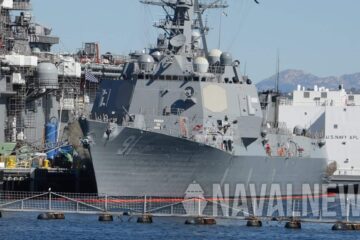The Naval Air Systems Command (NAVAIR) issued a « Future Vertical Lift (Maritime Strike) Analysis of Alternatives RFI » (Request for Information) on January 28. NAVAIR seeks at obtaining industry input relative to its capabilities to potentially satisfy the needs identified.
« The Office of the Chief of Naval Operations (OPNAV N98) has directed an Analysis of Alternatives (AoA) be conducted to support efforts to identify cost-effective alternatives to fill capability gaps in the MH-60R/S and MQ-8C as they begin to reach their end of service in the 2030s, » the document says.
OPNAV N98 identified a requirement to assess potential solutions for capability gaps due to the increasingly sophisticated adversary as well as capacity gaps incurred with aging and expected retirement of the aforementioned platforms.
The FVL (MS) capability is expected to reach an Initial Operational Capability (IOC) in the mid-twenty thirty’s timeframe to support a wide range US Navy missions.
Mission scenarios mentioned in the RFI includes i.e. Intelligence, Surveillance, Reconnaissance, and Targeting (ISR&T), Surface Warfare (SUW), Anti-Submarine Warfare (ASW), SOF Support, C2, Logistics and Mine Counter Measures (MCM).
Likely contenders for Future Vertical Lift (Maritime Strike)
SB>1 Defiant, Sikorsky–Boeing’s early design for the US Army FLRAA program (Sikorsky/Boeing picture) Bell’s V-280 Valor tiltrotor aircraft (Bell picture)
Two platforms currently competing for the U.S. Army’s Future Long Range Assault Aircraft (FLRAA, as part for the FVL – Future Vertical Lift program) could be natural contenders: Bell’s V-280 Valor advanced tiltrotor and the Sikorsky-Boeing Defiant X are competing for FLRAA which calls for the replacement of the UH-60 Back Hawk.








